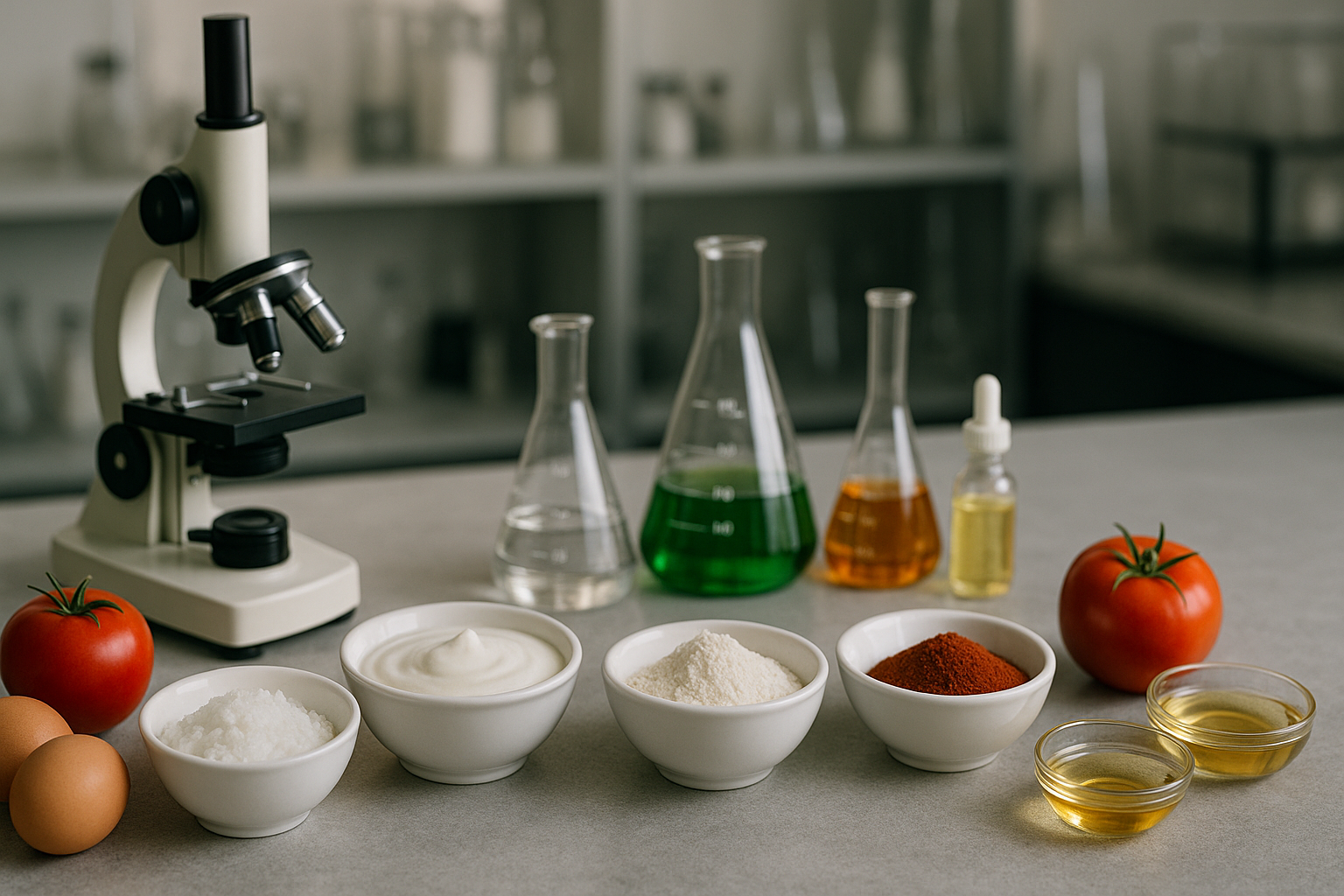
Sodium Alginate: Unlocking its General Properties and Research on Alginate Hydrogels
SUBSCRIBE TO OUR BLOG
Promotions, new products, and recipes.
-
The origin, structure, and gel-forming properties of sodium alginate that make it useful across food, pharmaceutical, and medical fields
-
How sodium alginate functions as a thickener, stabilizer, and encapsulating agent in both culinary and scientific applications
-
The latest research on alginate hydrogels and their promising roles in drug delivery, wound healing, and tissue engineering
-
Why purity, viscosity, and gel strength are critical factors when selecting the best sodium alginate for your needs
Sodium Alginate: Unlocking Its General Properties & Research on Alginate Hydrogels
Sodium alginate comes from brown seaweed and is very useful. It's used in food, medicine, and textiles because it can make hydrogels. Scientists are studying these hydrogels for drug delivery, healing wounds, and building tissues.
The quality of sodium alginate is key for its success. The best sodium alginate is pure and makes strong hydrogels.
Key Takeaways
- Sodium alginate is derived from brown seaweed and has versatile applications.
- Its ability to form hydrogels makes it valuable in various industries.
- Recent research has explored the potential of alginate hydrogels.
- Purity is critical for sodium alginate's effectiveness.
- The quality of sodium alginate impacts its uses.
What is Sodium Alginate and Its General Properties
Sodium alginate comes from brown algae and has special properties. It's used in many industries because it can turn into a gel when mixed with calcium ions. See also Sodium Alginate Explained.
Origin and Natural Sources
Sodium alginate is made from brown seaweed like Laminaria and Macrocystis. These seaweeds are full of alginate. This is then turned into sodium alginate through chemical reactions.
Chemical Structure and Composition
The chemical makeup of sodium alginate includes mannuronic and guluronic acids. These acids are arranged in blocks, which helps it gel. The exact mix of these acids can change based on where the alginate comes from.
Physical and Functional Characteristics
Sodium alginate thickens and stabilizes things, making it great for food and medicine. It's good at making gels with calcium ions. This is why it's used in thickening applications and in foods like desserts and sauces.
Finding the Best Sodium Alginate for Various Applications
Finding the right sodium alginate is key for different fields. It's used in food, pharmaceuticals, and biomedical research. Its versatility makes it valuable.
Food Industry Applications
Sodium alginate is a big deal in food because it forms gels. It makes food textures better and more stable.
Molecular Gastronomy and Spherification
In molecular gastronomy, sodium alginate makes spherified dishes. It turns liquids into spheres, adding a cool twist to food. Try the Direct Spherification Kit.
Stabilizers and Thickeners
Sodium alginate also thickens food like ice cream and dressings. It creates stable gels, making food better.
Pharmaceutical and Medical Uses
In medicine, sodium alginate is great because it's safe and forms gels. It's used in drug delivery and wound care.
Drug Delivery Systems
It's used in drug delivery because it can hold drugs and release them slowly. This makes treatments work better. For wall material comparisons, see this post.
Wound Dressing Materials
It helps in wound care by keeping wounds moist. This speeds up healing and is safe for sensitive skin.
Recent Research on Alginate Hydrogels
Alginate hydrogels are getting attention in biomedical research. They use sodium alginate's special properties for new medical solutions.
Tissue Engineering Advancements
Alginate hydrogels help grow cells for artificial tissues. This is a big step for regenerative medicine.
Bioprinting Applications
Bioprinting with sodium alginate can make detailed tissue structures. This could change organ transplantation forever.
The best sodium alginate has high purity, viscosity, and gel strength. Choosing the right one is critical for success. See Cape Crystal’s powdered form.
Conclusion: The Future of Sodium Alginate Research
Sodium alginate is a versatile compound used in many fields. It's found in food, pharmaceuticals, medicine, and research. Its unique properties make it highly sought after.
As research finds new uses for sodium alginate, its demand will rise. This will lead to more innovation in how it's made and used. We'll see more effective and efficient applications.
The future of sodium alginate research is bright. Studies are looking into its use in advanced medical treatments and sustainable food. By exploring its properties and uses, we can discover new opportunities and make progress. You may also be interested in spherification benefits.
FAQ
-
What is sodium alginate derived from?
Sodium alginate comes from brown algae, a type of seaweed. -
What are the primary components of sodium alginate's chemical structure?
Its chemical makeup is mainly mannuronic and guluronic acid units. -
What are some common applications of sodium alginate in the food industry?
In the food world, sodium alginate is used for spherification techniques. It also acts as a stabilizer and thickener. -
How is sodium alginate used in pharmaceutical and medical applications?
In medicine, sodium alginate is used in drug delivery systems. It's also used in wound dressings because it's biocompatible and can form gels. -
What is the significance of recent research on alginate hydrogels?
Recent studies on alginate hydrogels show their promise in tissue engineering and bioprinting. See more in this blog. -
What characteristics define the best sodium alginate for various applications?
The top sodium alginate has high purity, viscosity, and gel strength. These qualities make it effective across many uses. -
Can sodium alginate form gels, and if so, how?
Yes, sodium alginate can form gels with calcium ions. This is key for many of its uses.

|
About the Author Ed is the founder of Cape Crystal Brands, editor of the Beginner’s Guide to Hydrocolloids, and a passionate advocate for making food science accessible to all. Discover premium ingredients, expert resources, and free formulation tools at capecrystalbrands.com/tools. — Ed |
Enjoyed this post? Subscribe to The Crystal Scoop
Food-science tips, ingredient know-how, and recipes. No spam—unsubscribe anytime.
- Choosing a selection results in a full page refresh.



